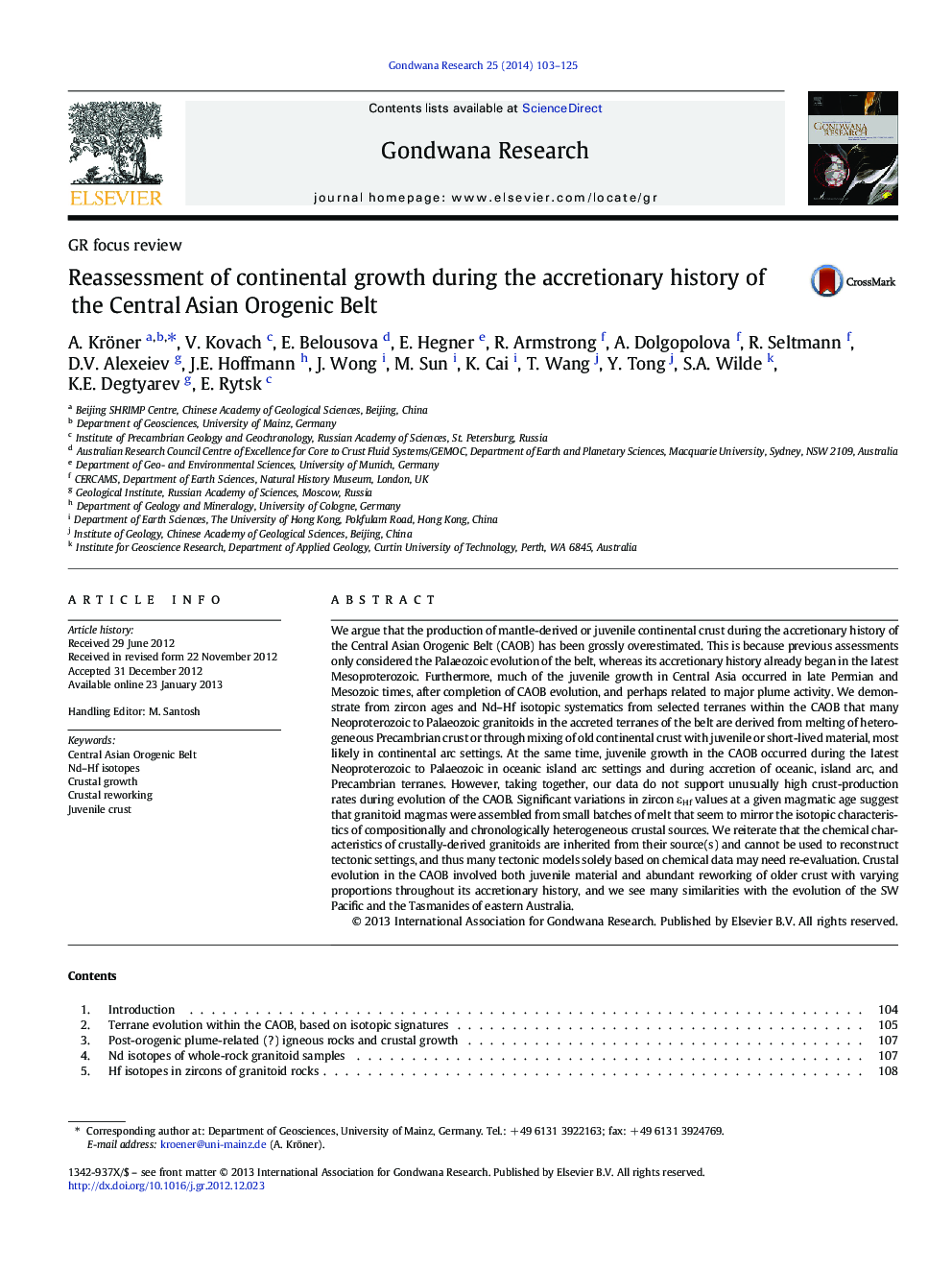| Article ID | Journal | Published Year | Pages | File Type |
|---|---|---|---|---|
| 4727118 | Gondwana Research | 2014 | 23 Pages |
We argue that the production of mantle-derived or juvenile continental crust during the accretionary history of the Central Asian Orogenic Belt (CAOB) has been grossly overestimated. This is because previous assessments only considered the Palaeozoic evolution of the belt, whereas its accretionary history already began in the latest Mesoproterozoic. Furthermore, much of the juvenile growth in Central Asia occurred in late Permian and Mesozoic times, after completion of CAOB evolution, and perhaps related to major plume activity. We demonstrate from zircon ages and Nd–Hf isotopic systematics from selected terranes within the CAOB that many Neoproterozoic to Palaeozoic granitoids in the accreted terranes of the belt are derived from melting of heterogeneous Precambrian crust or through mixing of old continental crust with juvenile or short-lived material, most likely in continental arc settings. At the same time, juvenile growth in the CAOB occurred during the latest Neoproterozoic to Palaeozoic in oceanic island arc settings and during accretion of oceanic, island arc, and Precambrian terranes. However, taking together, our data do not support unusually high crust-production rates during evolution of the CAOB. Significant variations in zircon εHf values at a given magmatic age suggest that granitoid magmas were assembled from small batches of melt that seem to mirror the isotopic characteristics of compositionally and chronologically heterogeneous crustal sources. We reiterate that the chemical characteristics of crustally-derived granitoids are inherited from their source(s) and cannot be used to reconstruct tectonic settings, and thus many tectonic models solely based on chemical data may need re-evaluation. Crustal evolution in the CAOB involved both juvenile material and abundant reworking of older crust with varying proportions throughout its accretionary history, and we see many similarities with the evolution of the SW Pacific and the Tasmanides of eastern Australia.
Graphical abstractFigure optionsDownload full-size imageDownload as PowerPoint slideHighlights► Crustal growth in the Central Asian Orogenic Belt is not as high as previously estimated. ► Distinct areas in the CAOB show voluminous juvenile crust and others mostly reworked crust. ► A combination of Nd and Hf isotopes helps to understand crustal growth and reworking in Central Asia.
